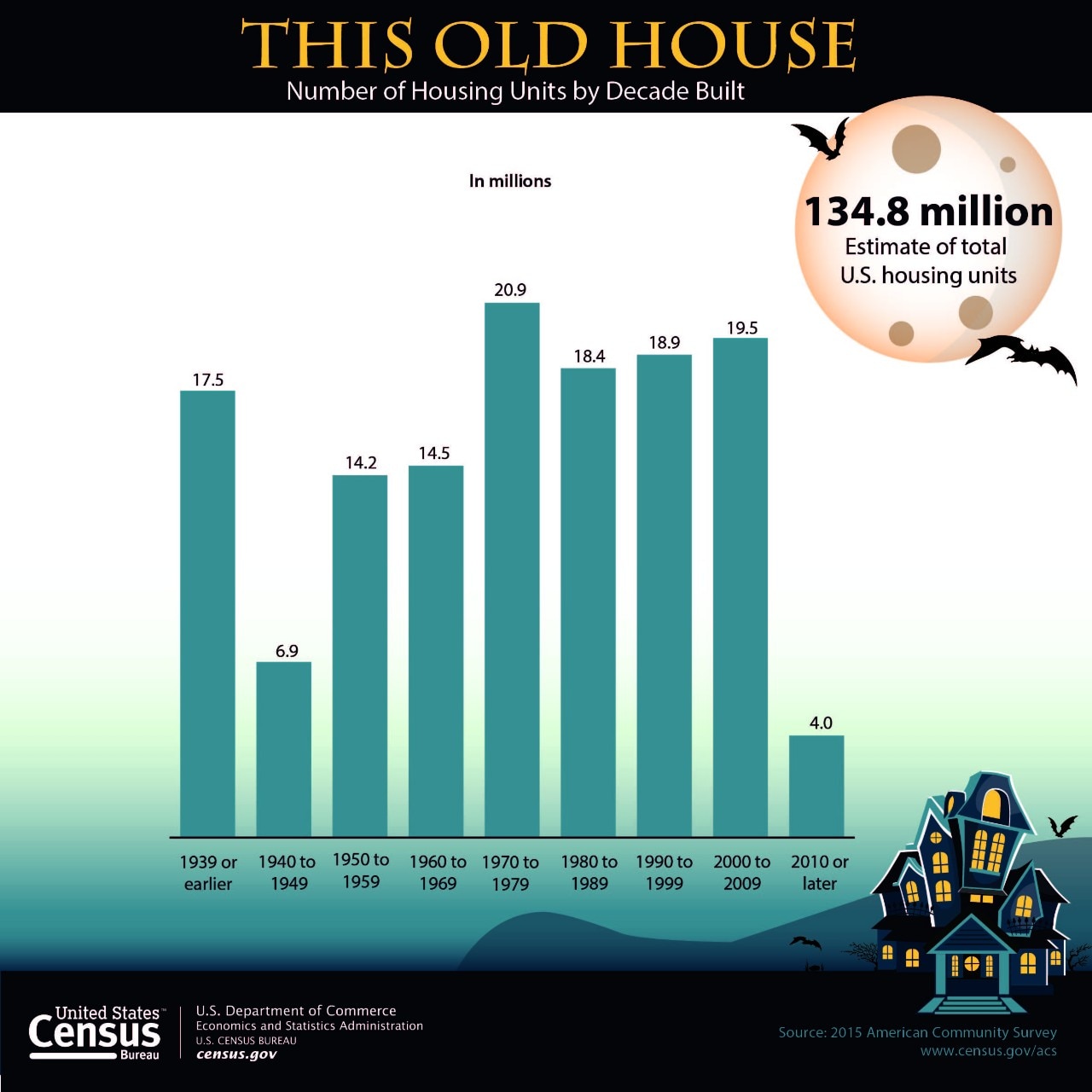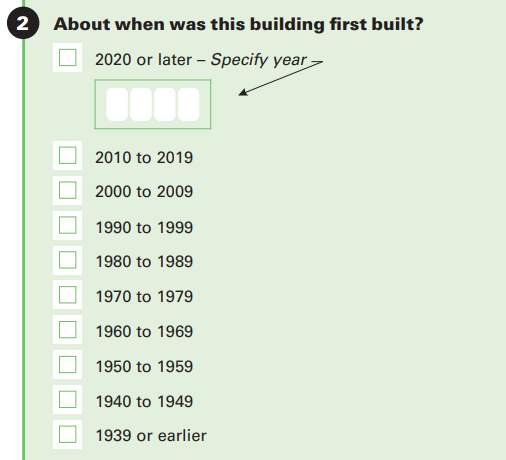Provide Adequate Housing
We ask about the age of housing in a community to understand whether available housing meets the needs of residents. When housing is not sufficient or older than a certain age, housing data help communities:
- Enroll eligible households in programs designed to assist them (such as the Low Income Home Energy Assistance Program).
- Qualify for grants from the Community Development Block Grant (CDBG), HOME Investment Partnerships Program, Emergency Solutions Grants (ESG), Housing Opportunities for Persons With AIDS (HOPWA), and other programs.
Plan Community Development
Information about the ages of homes in combination with whether they are occupied or vacant, helps communities identify opportunities to:
- Improve tax, assistance, and zoning policies.
- Reduce tax revenue losses from vacant or abandoned properties.
- Find older structures in disaster-prone areas during emergency planning and preparation.
Knowing more about the age of the housing stock in combination with the financial situation of residents, including income, employment, and housing costs, can help communities:
- Qualify for loan and grant programs designed to stimulate economic recovery.
- Improve housing.
- Start and maintain job-training programs.
- Define areas as empowerment or enterprise zones.
Infographic:
Number of Housing Units by Decade Built
Click the image to enlarge.

[Source: U.S. Census Bureau, 2015 American Community Survey 1-Year]








